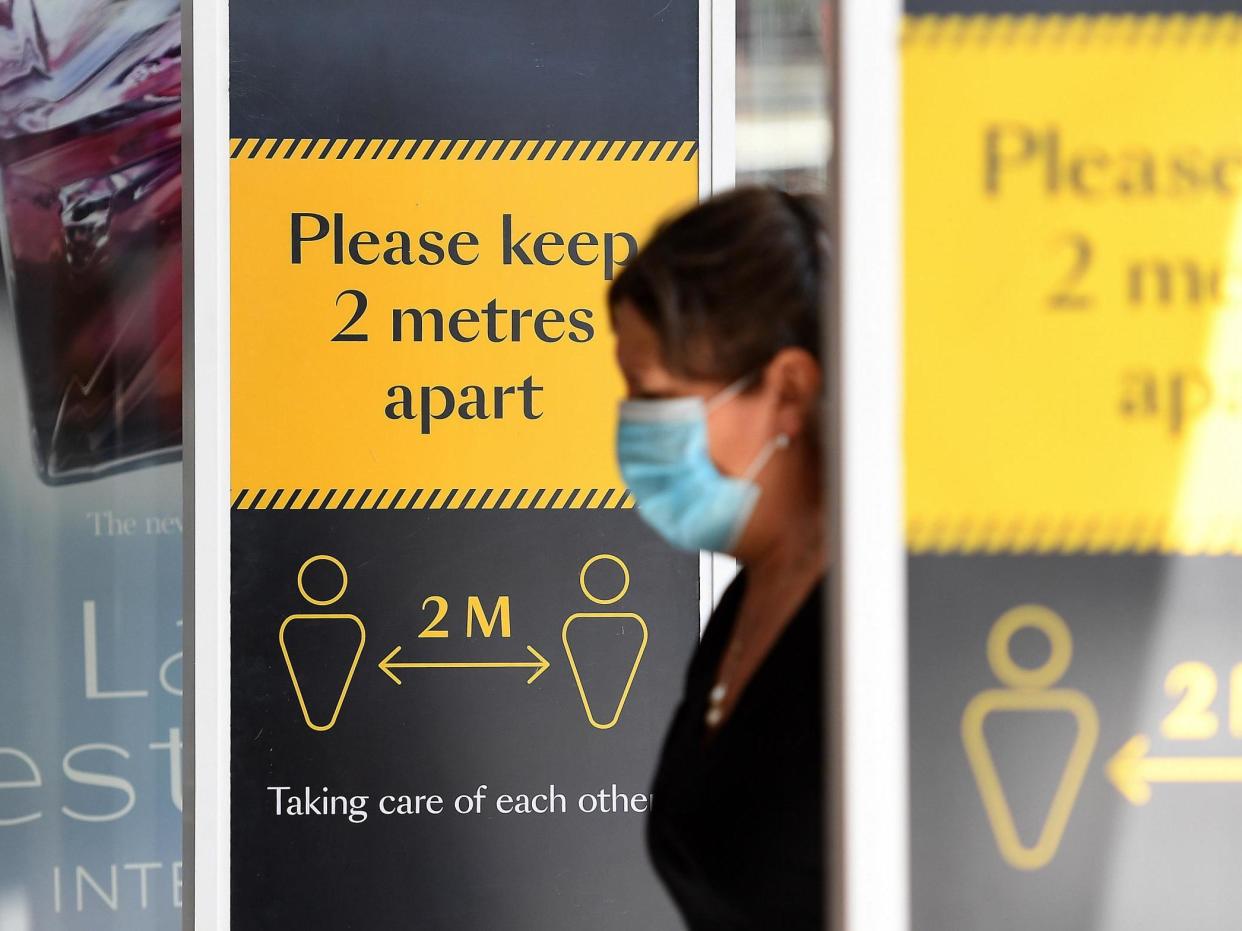Coronavirus: Two-metre social distancing rule based on ‘outdated science,’ medical experts say

Two-metre social distancing deployed across the world to limit the spread of coronavirus is based on “outdated science”, experts have said.
A group of British scientists said distance should not be the focal point of measures designed to limit the spread of the virus and that the one-size-fits-all system should be replaced by "graded recommendations" for different settings.
The UK government, as in many other nations, recommends people should remain two metres or one metre if mitigating factors such as face masks and screens are in use.
But researchers writing in the British Medical Journal (BMJ) said more flexible guidance would enable “a return towards normality in some aspects of social and economic life".
"Current rules on safe physical distancing are based on outdated science," Nicholas Jones, from Oxford University's Nuffield Department of Primary Care, and his colleagues wrote.
They added: "Distribution of viral particles is affected by numerous factors, including air flow.
"Evidence suggests Sars-CoV-2 may travel more than two metres through activities such as coughing and shouting.
Instead, the group suggest the government bases its guidance on multiple factors that affect risk, including type of activity, indoor versus outdoor settings, level of ventilation and whether face coverings are worn.
Duration of exposure, susceptibility of an individual to infection and viral load of the transmitter should also be considered, they said.
"Rules on distancing should reflect the multiple factors that affect risk, including ventilation, occupancy, and exposure time”, the researchers added.
They wrote that some of the research used to justify a 2m distance was first published in 1897, while research from the 1940s is "entrenched" in the assumed scientific basis of the one to two metre rules to prevent coronavirus spread, despite "limitations in accuracy" of the early studies,.
Newer studies have found that in certain circumstances, droplets from a forceful sneeze or cough could spread up to eight metres, while the group argue that much of the research is based on droplet size without accounting for exhaled air.
The authors added that policy should adapt to allow for the complexities of how viral transmission works.
“Physical distancing should be seen as only one part of a wider public health approach to containing the Covid-19 pandemic”, they wrote.
"It needs to be implemented alongside combined strategies of people-air-surface-space management, including hand hygiene, cleaning, occupancy and indoor space and air managements, and appropriate protective equipment, such as masks, for the setting.
The statement comes as children are set to return to schools across the country following a concerted campaign from No 10 to get pupils back in the classroom.
Teachers, unions and parents have also raised concerns over the safety of returning children who may find it difficult to maintain social distancing under strict guidelines.
Read more
Boris Johnson says schools mask advice might change

 Yahoo Movies
Yahoo Movies 
